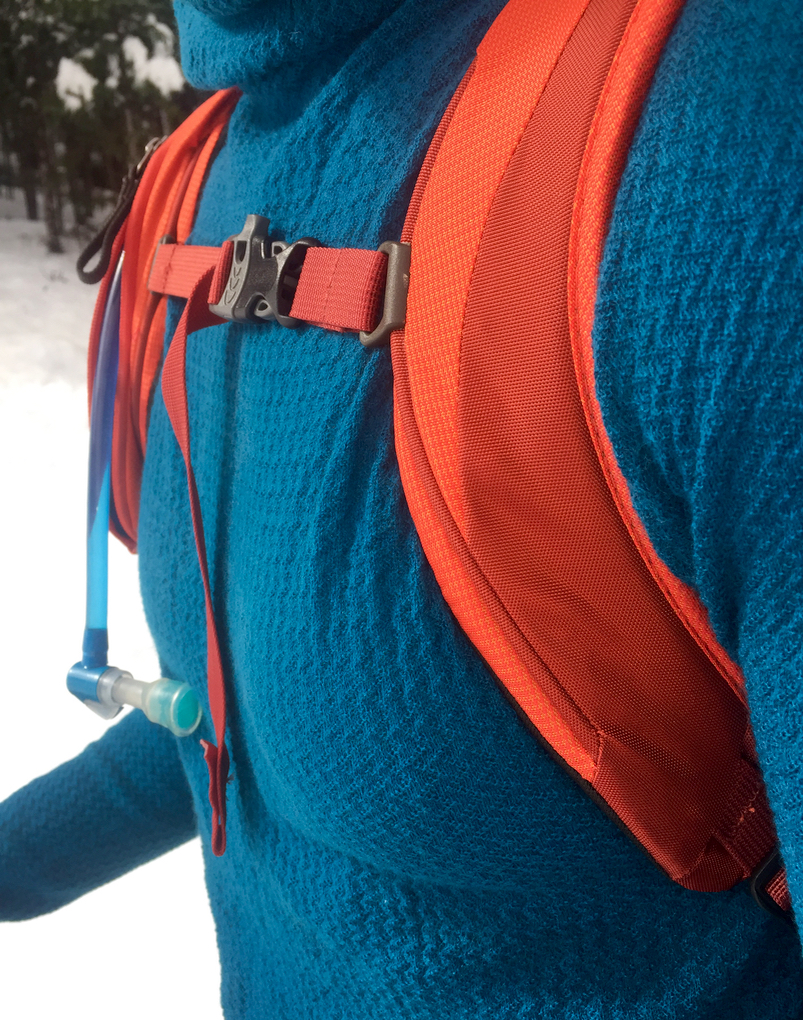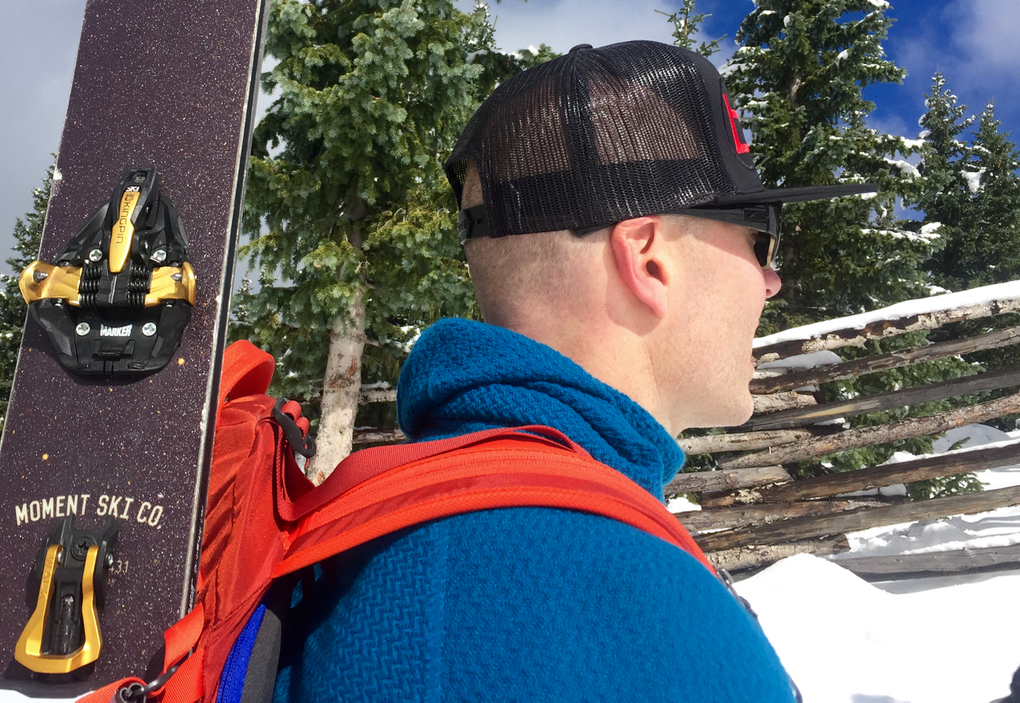
Patagonia Merino Air Hoody
Size Tested: Large
Fit: Slim Fit
Fabric: Merino Wool / Capilene Blend
Stated Features:
- Fine merino wool from the grasslands of Patagonia and blended with Capilene recycled polyester for improved wicking, durability and dry time
- 18.9 micron-gauge yarn; lofted wool innovation
- Fabric stretches to move with the body
- Seamless 3D construction eliminates chafe points through the entire garment
- High collar and self-fabric hood with anatomical shaping for warmth
- 5.6-oz (190-g) 51% chlorine-free merino wool/49% Capilene® recycled polyester seamless zigzag knit
- 207 g (7.3 oz)
- Made in Hong Kong
Blister’s Measured Weight (size Large): 222 grams
MSRP: $149 (USD)
Test Locations: Canterbury, New Zealand; Santa Fe, New Mexico
Days Worn: ~30
Reviewer: 5’10”, 175-180 lbs.
Intro
Patagonia is talking a pretty big game about their new Merino Air Hoody, but having logged around 30 days in the Merino Air Hoody, I’ve found their description to be quite accurate:
“We make all our Merino Air baselayers from a blend of Merino wool from the grasslands of Patagonia (51%) and 100% recycled polyester (49%). We treat the wool fibers with an innovative spinning technology that increases their loft and makes them feel nearly weightless. The lofted wool and recycled polyester yarns are then knit directly into a seamless garment. The result is a baselayer with superior performance qualities; it offers outstanding warmth for its weight, provides exceptional breathability, maintains the natural odor-fighting properties of wool, and improves wicking, durability, and dry times compared to conventional merino baselayers. Our Merino Air is soft against the skin, stretches to move with the body and features 3D construction to eliminate seams and chafe points throughout the entire garment. Details include a high collar for wind protection and an anatomically shaped, self-fabric hood for additional warmth.
Sounds impressive. And novel. And without a doubt, the new Merino Air Hoody is the most unusual base layer I’ve ever worn. The first time I put it on, my immediate thought was, “No.”
Then, rather reluctantly, I started wearing it down in New Zealand … and I’ve kept wearing it.

In fact, I am currently (still) wearing it at 11:30 am this morning, having (once again) skinned & skied in it yesterday afternoon, hustled down from the mountain to get back to work, quit working around 2am, then—being too tired / too lazy to shower—just fell into bed still wearing the thing.
And that, in a nutshell, has become the new norm for me with the Merino Air Hoody: put it on, leave it on.
The Fabric
The “Merino” Air Hoody is actually half wool, half synthetic (51% merino, 49% recycled polyester), and the stated fabric weight is 190 g/m2. It is a very stretchy knit fabric, and it looks like a slim-fitting knit sweater.

Comparisons: Measured Overall Weights and Stated Fabric Weights
Patagonia emphasizes the Merino Air’s “outstanding” warmth to weight ratio, and they have a pretty strong argument. Take a look:
222 grams – Patagonia Merino Air Hoody – 190g/m² – size Large
229 grams – WoolX Base Camp Hoodie – 160g/m² – 100% merino wool – size Large – 1/2 zip hoodie
270 grams – Mons Royale Original LS base layer – 190g/m² – size Large – no hood
321 grams – Mons Royale Riders Crew – 250g/m² 97% Merino, 3% Elastane – size Large – no hood
The thinnest of these four pieces—the very good, 160g/m², WoolX Base Camp Hoodie (currently my favorite baselayer for warm / hot weather ski touring) still comes in slightly heavier than the Merino Air Hoody.
And perhaps more impressively, I’d say that the 190g/m² Merino Air Hoody is comparable in terms of warmth to the heaviest piece in this group, the 250g/m² Mons Royale Riders Crew, which is 100 grams heavier without a hood.
So yes, in terms of warmth, the Merino Air Hoody punches above its weight class.

I can’t speak for you, but in general for me, for high-output activities like ski touring in above-freezing temps, 150-160 g/m2 is probably my ideal weight. When touring in the Merino Air down in New Zealand in temps in the upper 40s / lower 50s (F), the Merino Air was warmer than I needed—it was fine, but it was more than I needed. Then again, once we’d hit the summit and encounter blasts of cold wind, suddenly it wasn’t more than I needed, and I’d make quick use of the built-in hood (more on the hood below).
For lift-accessed skiing, easy hikes, or wearing around the house, I’m very comfortable in temps in the 60s (F). So in keeping with my general experience with merino layers, I’ve found the Merino Air Hoody to work well across a broad temperature range.
NEXT: Fit, Feel, Odor Fighting, and that Hood…

Great review as always and that hoodie is very interesting, but my real question is . . . how do you like touring with the Blister Pro/Kingpin setup? Is that what you take on longer tours as well? Feel like that is a fairly heavy ski for touring, but maybe worth lugging around.